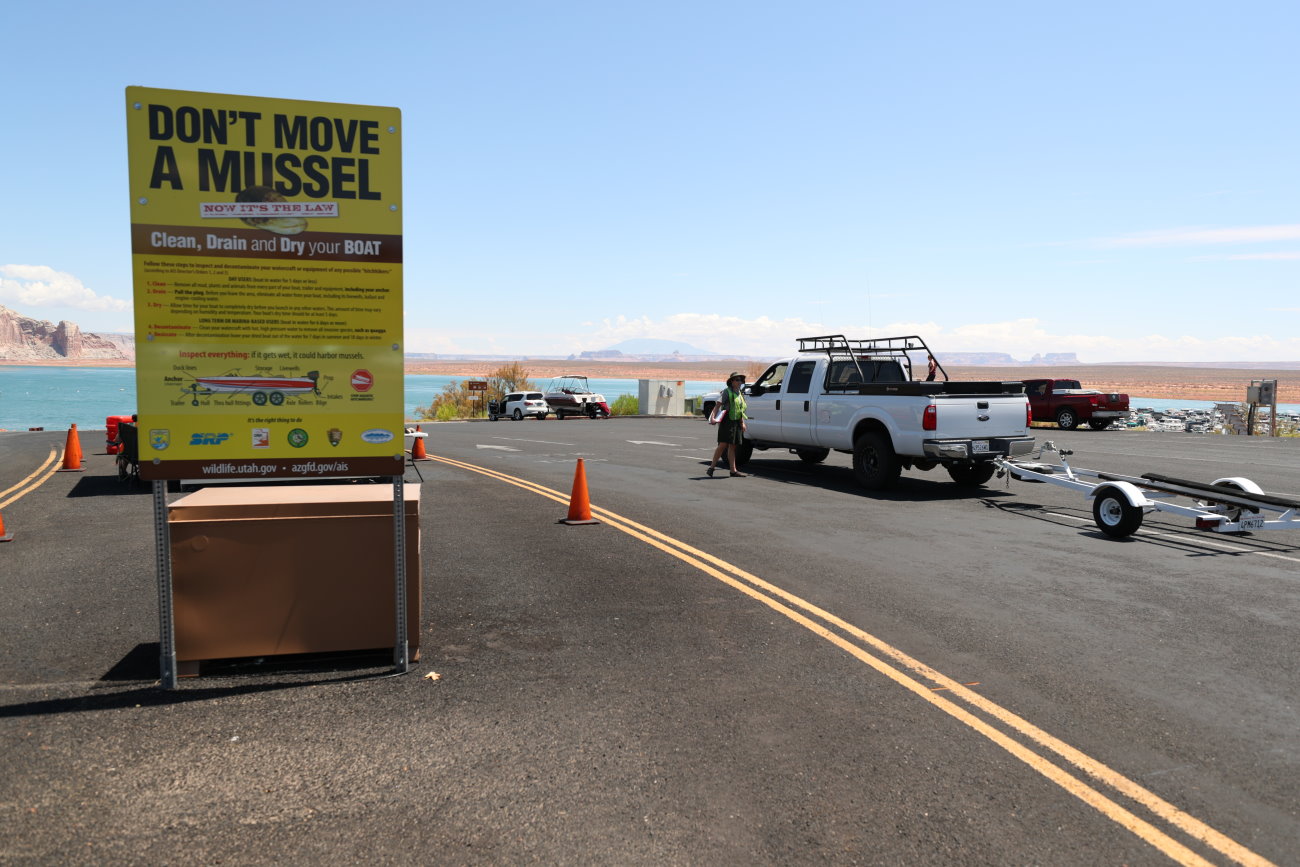
ST. GEORGE — Law enforcement officers and technicians with the Utah Division of Wildlife Resources and other agencies had a busy holiday weekend working to inspect and decontaminate boats across the state. Their efforts focused on preventing the invasive quagga mussels in Lake Powell from spreading to other Utah waterbodies.

According to a press release issued Tuesday by the DWR, statewide, Aquatic Invasive Species technicians with the DWR, Utah State Parks, Arizona Game and Fish Department and the National Park Service inspected 4,496 boats and performed 46 decontaminations from Friday to Monday.
Of those total numbers, 1,688 of the boat inspections and 31 of the decontaminations took place at inspection stations in the Lake Powell area.
During the 2021 Memorial Day weekend, 11,403 inspections were performed statewide, and 171 boats were decontaminated.
Statewide, DWR conservation officers issued four citations for violations of Utah laws established to prevent the spread of invasive mussels, the release states. The majority of the violations were due to boaters and others with watercraft not stopping at an inspection station.

“We want to remind boaters that all watercraft leaving Lake Powell require an exit inspection during the inspection station’s hours of operation,” DWR Aquatic Invasive Species Lt. Bruce Johnson said in the news release.
Watercraft includes kayaks, canoes, paddleboards and inflatable rafts. It is important to remember that inspections are not the same as decontamination, Johnson added. After a watercraft is inspected, it must still be decontaminated before relaunching at another waterbody.
“If a decontamination can’t be performed, the watercraft must wait the required dry time before launching again. Always be sure to clean, drain and dry your watercraft,” Johnson said. “It will save you a lot of time when you are on your way to boat our great waters in Utah.”
There are over 40 inspection stations located at various waterbody boat ramps, along highways and at Port of Entry stations throughout Utah. Visit the Utah Department of Natural Resources website for a list of all the decontamination stations around the state. Visit the STD of the Sea website for further information regarding boater requirements.
Why quagga mussels are bad
- They plug water lines, even lines that are large in diameter.
- If they get into water delivery systems in Utah, it will cost millions of dollars annually to remove them and keep the pipes free, which can result in higher utility bills.
- They remove plankton from the water, which hurts fish species in Utah.
- Mussels get into your boat’s engine cooling system. Once they do, they’ll foul the
- system and damage the engine.
- When mussels die in large numbers, they stink and the sharp shells of dead mussels also cut your feet as you walk along the beaches.
Copyright St. George News, SaintGeorgeUtah.com LLC, 2022, all rights reserved.